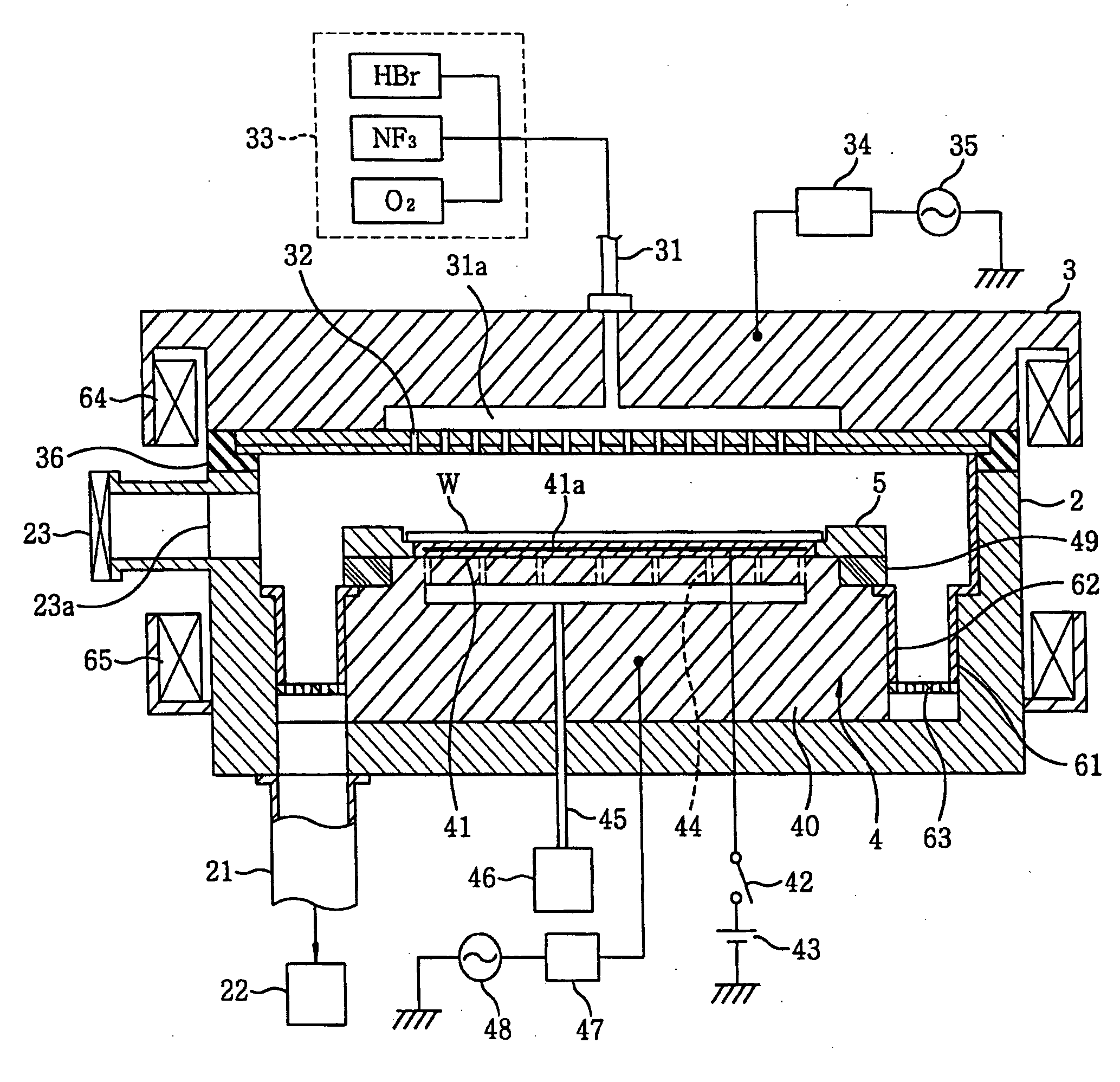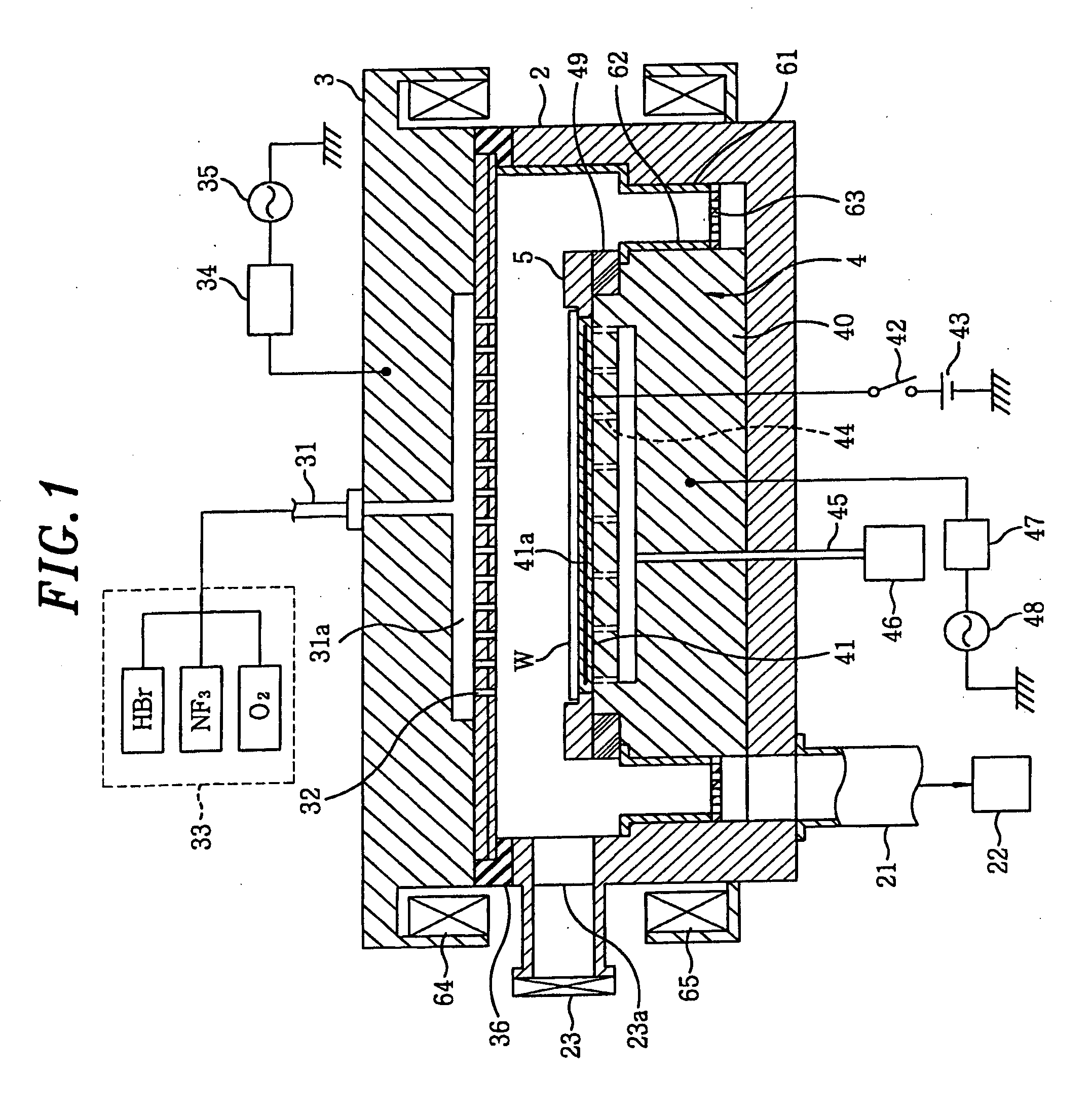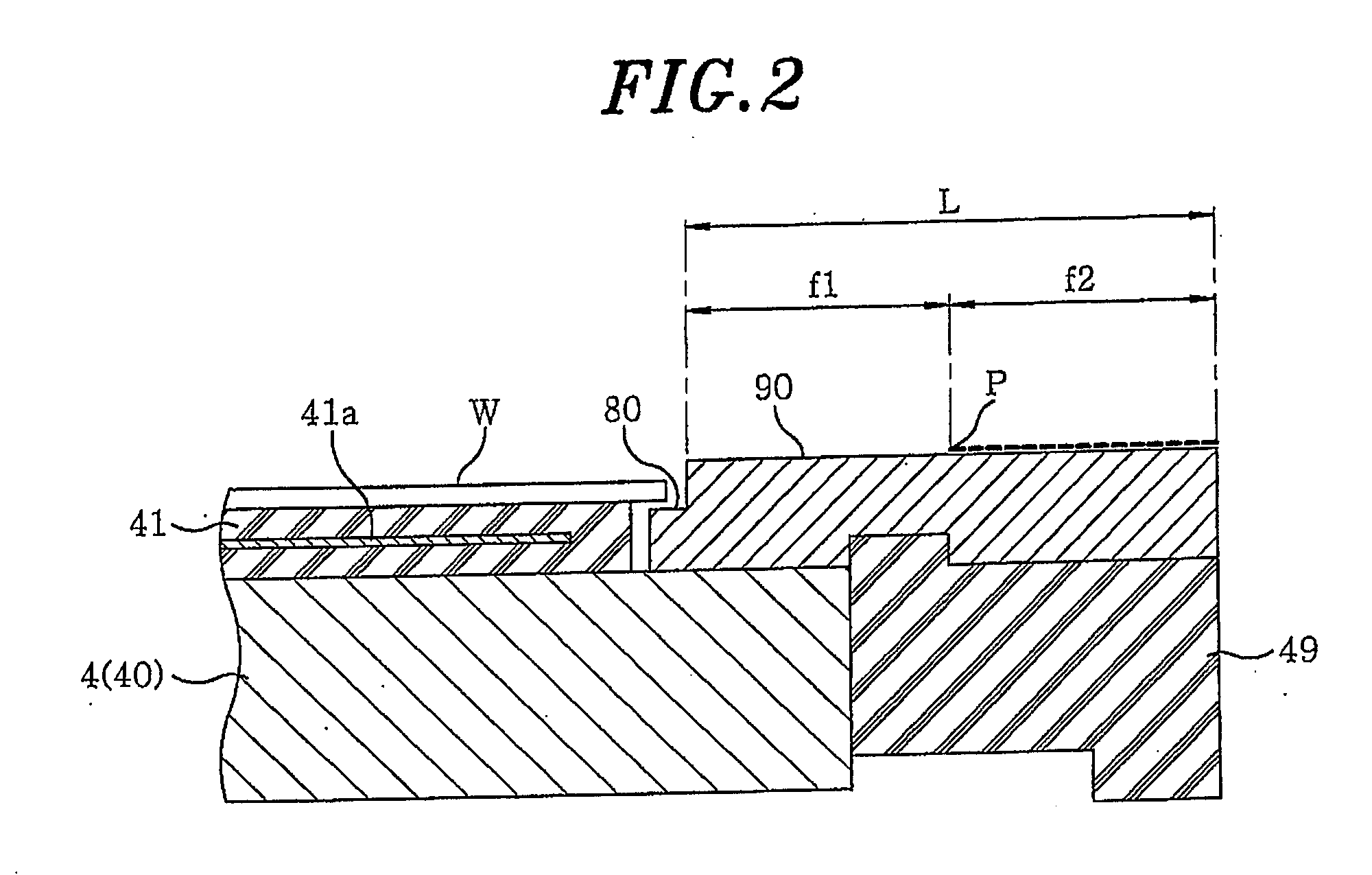Focus ring, plasma etching apparatus and plasma etching method
a plasma etching and focus ring technology, applied in the direction of adhesives, decorative arts, electric discharge tubes, etc., can solve the problems of increasing the connection between the source/drain of the cell transistor and the capacitor electrode, the need for deep trenches to be formed, and the difficulty of processing beyond the 0.18 m regim
- Summary
- Abstract
- Description
- Claims
- Application Information
AI Technical Summary
Benefits of technology
Problems solved by technology
Method used
Image
Examples
Embodiment Construction
[0028]Hereinafter, preferred embodiments of the present invention will be described in detail with reference to the accompanying drawings.
[0029]As a preferred embodiment of a plasma etching apparatus using a focus ring in accordance with the present invention, a magnetron reactive ion etching apparatus will now be explained as an example. Reference numeral 2 in the drawing indicates an airtight processing vessel made of a conductive member, e.g., aluminum, which is grounded. Further, the processing vessel 2 has an upper electrode 3 also serving as a gas shower head of a gas supply unit for introducing a processing gas for performing an etching; and a susceptor 4, also serving as a lower electrode, for mounting thereon a substrate, e.g., a silicon wafer (hereinafter, referred to as a wafer) W, the upper electrode 3 and the susceptor 4 being arranged to face each other.
[0030]Still further, a gas exhaust line 21, coupled to a bottom portion of the processing vessel 2, is coupled at the...
PUM
| Property | Measurement | Unit |
|---|---|---|
| surface roughness Ra | aaaaa | aaaaa |
| surface roughness Ra | aaaaa | aaaaa |
| surface roughness | aaaaa | aaaaa |
Abstract
Description
Claims
Application Information
 Login to View More
Login to View More - R&D
- Intellectual Property
- Life Sciences
- Materials
- Tech Scout
- Unparalleled Data Quality
- Higher Quality Content
- 60% Fewer Hallucinations
Browse by: Latest US Patents, China's latest patents, Technical Efficacy Thesaurus, Application Domain, Technology Topic, Popular Technical Reports.
© 2025 PatSnap. All rights reserved.Legal|Privacy policy|Modern Slavery Act Transparency Statement|Sitemap|About US| Contact US: help@patsnap.com



